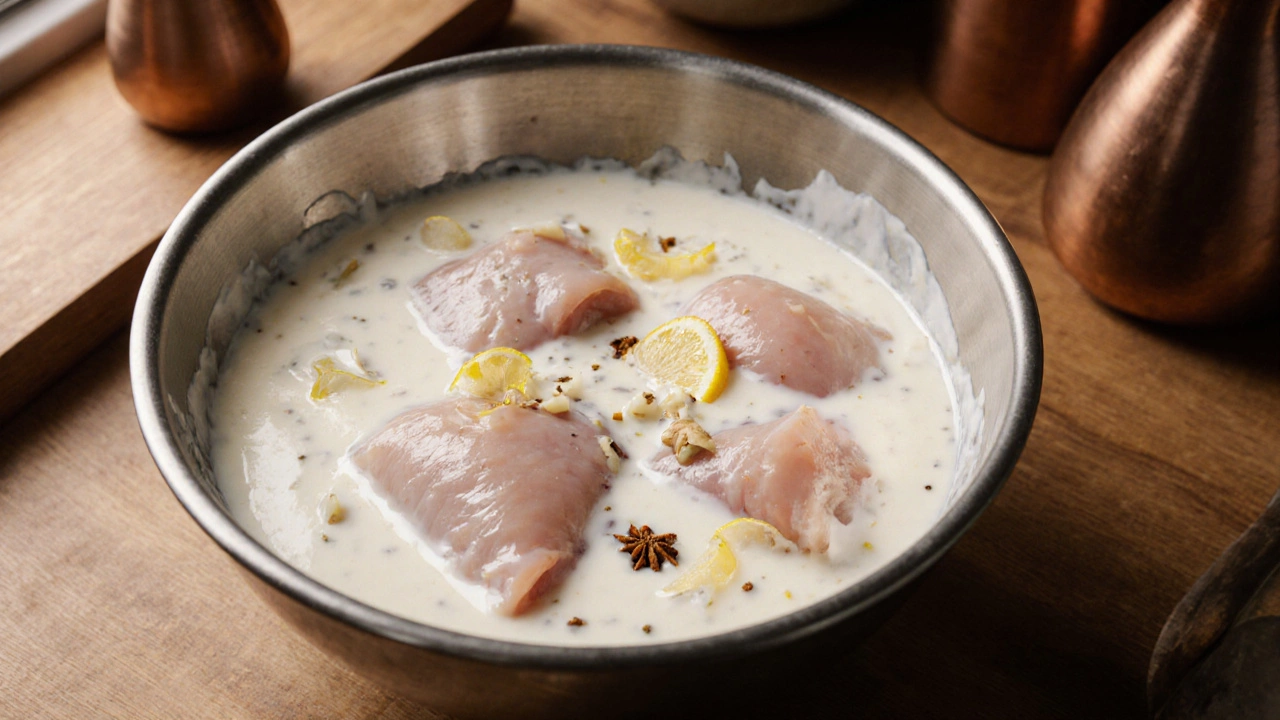Marinade Safety
When you think about marinade safety, the practice of keeping flavored liquid mixtures safe for the foods they coat, the first thing that comes to mind is preventing spoilage. Food safety, a set of guidelines that ensure what we eat is free from harmful microbes is the broader framework, and every marinating step fits inside it. Adding acidic ingredients, like lemon juice, vinegar, or yogurt, changes the pH and can slow bacterial growth, but it also creates new timing rules. Finally, cross‑contamination, the transfer of raw juices to ready‑to‑eat foods or surfaces is the biggest risk if you overlook basic hygiene. Below we break down how these ideas connect and what you can do right now.
Key Practices for Safe Marinating
First, temperature controls the whole process. A marinating meat left at room temperature for more than two hours becomes a breeding ground for bacteria, regardless of how acidic the mix is. The safe rule is simple: keep the container in the fridge (below 40 °F / 4 °C) and treat the refrigerator as the non‑negotiable home for any raw protein with a soak. If you need a quick flavor boost, a ten‑minute room‑temperature dip is fine, but anything longer belongs in the cold.
Second, timing matters because acid doesn’t stop all microbes instantly. For delicate proteins like fish, 15‑30 minutes in a lemon‑based marinade is enough; longer periods turn the flesh mushy and can still let hardy bacteria survive. Tougher cuts of chicken or beef can handle a few hours, but beyond 24 hours the texture degrades and the risk rises. Think of the marination window as a balance: enough time for flavor, not so much that texture suffers or bacteria multiply.
Third, container choice influences safety. Non‑reactive vessels—glass, stainless steel, or food‑grade plastic—won’t leach metals into the acidic mix. Metal bowls can react with vinegar or citrus, altering taste and potentially encouraging bacterial growth. A sealed container also prevents drips onto other foods, cutting cross‑contamination in half.
Fourth, never reuse leftover marinade that has touched raw meat unless you bring it to a boil for at least three minutes. Boiling destroys lingering pathogens, turning a potential hazard into a safe sauce. If you want a serving‑ready glaze, set aside a portion of the fresh, untouched mixture before adding the raw protein.
Fifth, keep surfaces clean. Wash cutting boards, knives, and hands with hot, soapy water right after handling raw marinated items. A single splash onto a ready‑to‑eat salad can undo hours of careful fridge control. Using separate boards for raw and cooked foods creates a physical barrier that significantly lowers cross‑contamination odds.
Sixth, label and date your marinades. When you juggle multiple dishes—say, a spicy chicken and a tangy fish—you’ll quickly lose track of which container has been in the fridge the longest. A quick note with the date and protein type prevents accidental over‑marination and ensures you discard anything that’s sat too long.
Finally, understand that not all acids act the same. Yogurt’s mild acidity works slower than straight lemon juice, so recipes calling for yogurt often recommend longer marination times. Conversely, a splash of vinegar can speed up the process but also makes the meat more prone to drying if left too long. Matching the acid strength to the protein’s texture keeps both flavor and safety in check.
By linking marinade safety to temperature control, timing, container choice, and hygiene, you create a solid safety net that lets you focus on flavor. The posts below dive deeper into each of these areas—whether you’re curious about the science behind brining chicken, the perfect moment to add garlic and ginger, or how acidic lemons keep biryani fluffy. Ready to explore practical tips and real‑world examples? Keep reading, and you’ll find the exact steps to make every soak, rub, and dip both tasty and safe.

Should You Rinse Yogurt Marinade Before Cooking?
Discover whether rinsing a yogurt marinade before cooking is necessary, the science behind it, safety tips, and practical guidelines for best flavor and texture.